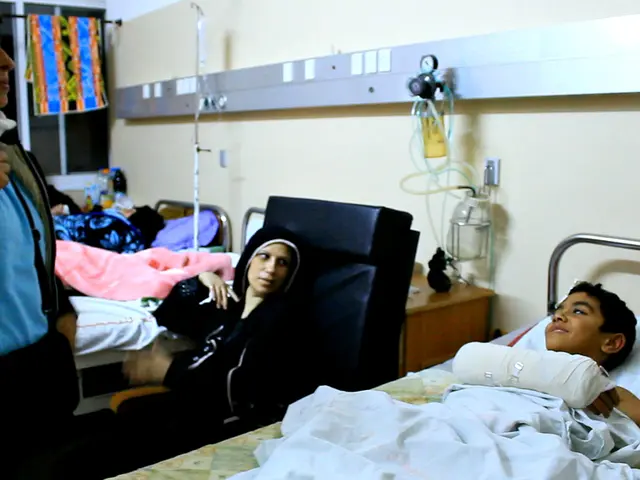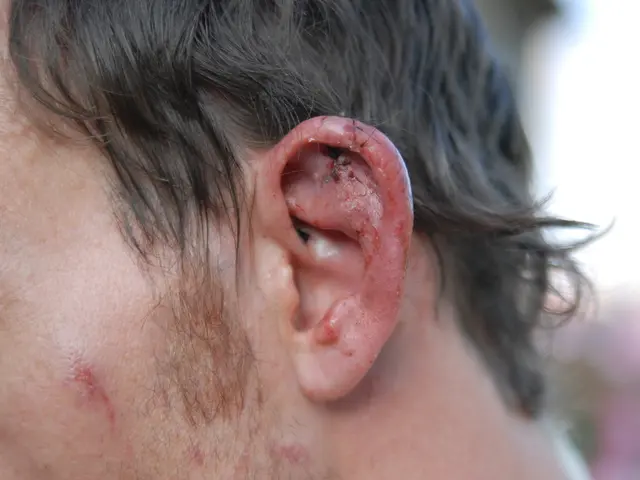Anemia caused by Diamond-Blackfan: Recognizing symptoms, diagnostic methods, and treatment options
Diamond-Blackfan anemia (DBA) is a congenital, rare blood disorder that primarily affects the production of red blood cells. This condition, which is caused by mutations in genes that encode ribosomal proteins, is essential for protein synthesis in cells.
Causes and Prevalence
Approximately 5 to 7 per million newborns worldwide are diagnosed with DBA. The most common genetic cause of DBA involves mutations in the RPS19 gene, accounting for around 25% of cases. Other genes implicated include RPL5, RPL11, RPL35A, RPS10, RPS17, RPS24, and RPS26. Together, these genes account for about 50% to 60% of DBA cases, with the RPL5 and RPL11 mutations being particularly prevalent.
DBA is a genetically heterogeneous disorder, meaning that it can result from mutations in a variety of genes related to ribosome function.
Symptoms and Diagnosis
DBA can cause symptoms such as increased sleepiness, irritability, reduced appetite, weakness, paler skin, rapid heartbeat, and physical changes. Diagnosis involves assessing clinical criteria and ordering laboratory tests such as a Complete Blood Count (CBC), reticulocyte count, mean corpuscular volume, and erythrocyte adenosine deaminase (eADA) levels.
Physical changes associated with DBA may include smaller head size, flat nose, wide-set eyes, ears lower than usual, small lower jaw, small or recessed chin, cleft palate, thumb irregularities, shorter neck, prominent shoulder blades, and impaired growth.
Treatment and Prognosis
The first-line treatment for DBA is usually a red blood cell transfusion to treat anemia, often during the first year of life. After the first year, people may start a course of corticosteroids, which improve red blood cell counts in around 80% of DBA cases.
Stem cell transplant has a high rate of success in people with DBA who are under 10 years old and have a donor with matching human leukocyte antigens (HLA). Survival rates for a stem cell transplant with a matched and related donor may be around 90% in young people with DBA who are otherwise healthy.
Other treatments include iron chelators to remove excess iron from the body as a side effect of prolonged blood transfusions and preimplantation genetic testing to conceive a child without passing on a genetic mutation for DBA.
The outlook for people with DBA depends on their response to treatment and any complications. DBA may also cause other health issues, including eye problems, kidney abnormalities, heart defects, and issues with male reproductive organs. Additionally, DBA may increase the risk of developing certain types of cancer, including bone cancer, colon cancer, acute myeloid leukemia, and myelodysplastic syndrome.
[1] Data from the Diamond-Blackfan Anemia Registry of North America (DBAR) shows that existing treatments for DBA may result in an overall survival of 80%, with a median overall survival of 58 years.
Science reveals that chronic medical conditions, such as deficiency anemias like Diamond-Blackfan anemia (DBA), can be traced back to genetic mutations in essential genes for protein synthesis in cells, including RPS19, RPL5, RPL11, RPL35A, RPS10, RPS17, RPS24, and RPS26. Health and wellness professionals diagnose DBA through laboratory tests like Complete Blood Count (CBC), reticulocyte count, and erythrocyte adenosine deaminase (eADA) levels, as well as assessing symptoms like increased sleepiness, weakness, and physical changes. Therapies and treatments for DBA include red blood cell transfusions, corticosteroids, stem cell transplants, iron chelators, and preimplantation genetic testing. Although the outlook for people with DBA varies based on treatment response and potential health complications, data indicates an overall survival of 80% with a median overall survival of 58 years.




